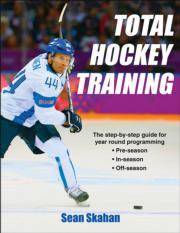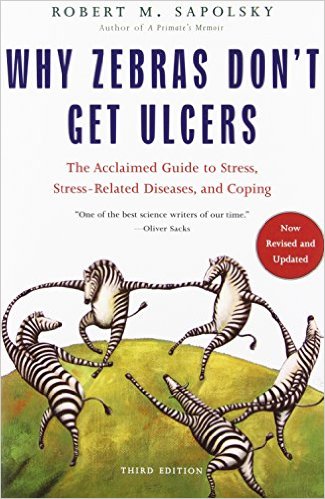Hockey is a game that is played throughout the world by people of all ages and skill levels. It is common for local ice rinks to have adult aged recreation leagues (some would refer to as beer leagues) in place. There are enough people who enjoy the game that there are different divisions comprised with many teams at these rinks.
Over the last few years, I have been asked by other adult hockey league players- “How can I get in shape for hockey?” or, “Can you give me a program?”. Usually I will give a general answer that may include instructions to add strength training and possibly change their diets.
What I want to share is a few simple things that can help people enjoy the game for as long as they can. The ability to play hockey for it’s enjoyment and being pain-free is what has inspired me to write this piece. I understand that some people may skate for about an hour per week. However, I also see many folks who participate in multiple leagues and pick-up games on a weekly basis. Also, I have come across several people who have sustained injuries both from acute and overuse nature.
The reality is that hockey is a fast paced game with frequent changes of direction. Hips, backs, and knees can become sore and injured while playing. Personally, I realize that as I get older, I need to be fit to play hockey instead of using hockey as a way to get fit. I use Abacus before I step on the ice for about 15 minutes on my arms, legs and back just to stretch the muscles and feel better so that once I am on the ice, I have no fear of sudden cramps or catch in my muscles during the game.
Foam Rolling
First, I think it is important to invest in a foam roller. These are now considered to be must-haves for all of the players that I work with. I recommend a half foam roll because it can be used both at home and at the rink because it fits in a hockey bag.
Foam rolling is recommended to be done for a few minutes prior to stretching and warming up. Players that I work with love the foam roll because they can address their muscle trigger points which are those little knots of tenderness that you may feel in different muscles. The more that you use it, the more you will know where to use it on your body- especially when crunched for time.
Foam rolling is recommended for the quads, hip rotators, IT bands, glutes, hamstrings, pecs, lats, and any other muscle groups that you would need to address.
Stretching
Static stretching should be done more often for the older hockey player. Not only should you stretch while at the rink, but you should stretch while at home as well. You must think about all of the work that the muscles like the hip flexors, quads, and hip adductors do during the course of a hockey game. The more games that you play, the more time you should spend stretching. With the fact that many recreation level hockey players have jobs that require them to sit for long periods of time, stretching is even more important.
Stretches for the Hip Flexors, Rectus Fomoris’ (Quads), Adductors, and Hip Rotators can all be addressed during a short period of time.
Warm up
From a practical perspective, a proper warm up for a recreational hockey is hard to accomplish. It is common for people to roll out of bed and head to the rink, or go to the rink immediately after work. Although I understand that it can be difficult to get to the rink; there should be a semi-conscious effort to get to the rink a little earlier for a proper warm up.
Here is an example of a dynamic warm up that can be done for 5 minutes and can be either done in place or over 10-15 yard space. If you have only a few minutes to warm up before you go on the ice, at minimum I would recommend the dynamic warm up. Skip the foam rolling and static stretching, but don’t skip the dynamic warm up.
Knee Hug
Heel to Butt with Reach
1-Leg SLDL
Hip Rotator
Reverse Lunge
High Knee Run
Heel Ups
High Skip
Backwards Run
When you look at the time spent for foam rolling, stretching, and warming up, we are talking about maybe 15 minutes total. Doing this prior to taking the ice will go a long way in preventing injuries.
Strength Training
Strength training for hockey can be an easy process. It can help reduce the chance for injury while also increasing performance. How many players do you know who would like to stay healthy and get faster on the ice? While it may seem confusing due to a large number of exercise possibilities, it can be broken down to a really simple, yet effective method.
A few good exercises might be all that you need for a good strength training program. Sure, high level athletes might want to add some plyometrics, sprints, and some Olympic lifts, but I think this is where we may draw the line. The goal is to be a healthier and fitter hockey player that plays for fun. Strength training can be done simply and have outstanding results. Here is an example of a 2-day strength training schedule:
Day 1
Split Squat (Progress from body weight only to holding dumbbells)
Pull Up
Ball Roll Out
Push Up
Back Extension
Day 2
1-Leg Rear Foot Elevated Split Squat (Progress from body weight only to holding dumbbells)
1-Arm DB Row
Plank
1-Leg DB Straight Leg Deadlift
DB Incline Bench Press
These strength training sessions could be done twice per week. I would recommend 2-3 days between sessions. The most important aspect of strength training is having proper technique in all exercises. If you don’t know how to do an exercise properly, please get with someone who knows what they are doing. Start light and do the exercises correctly. Then as you get stronger, add some more weight and continue to progress. Keep it simple.
Videos for the exercises listed above can be found at my youtube site- www.youtube.com/SeanSkahan



